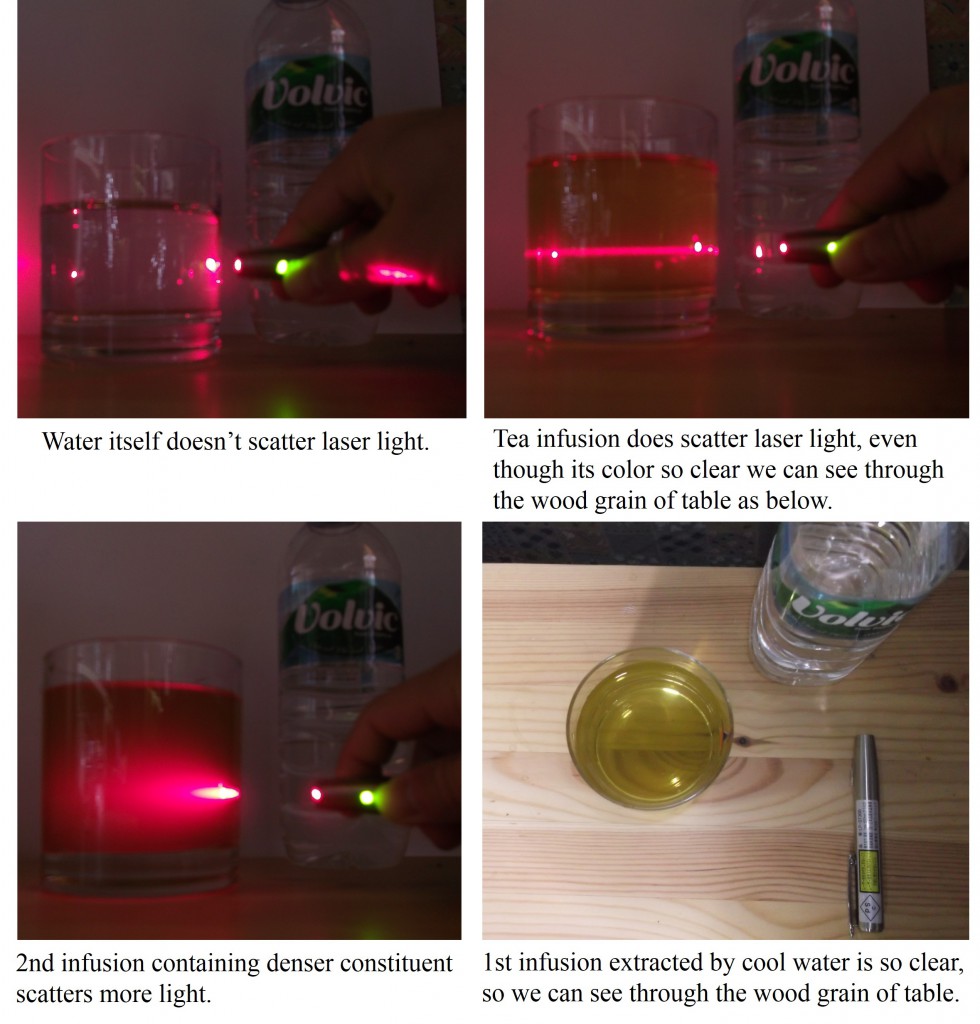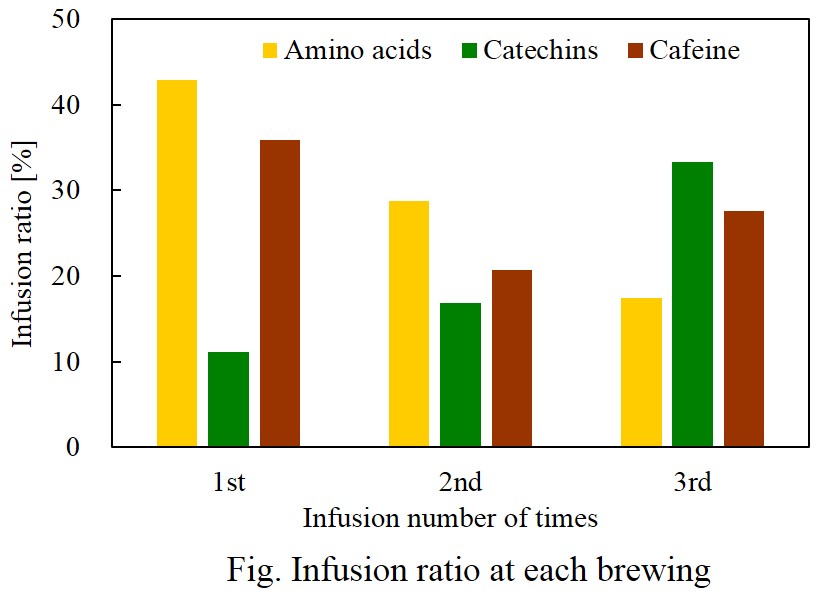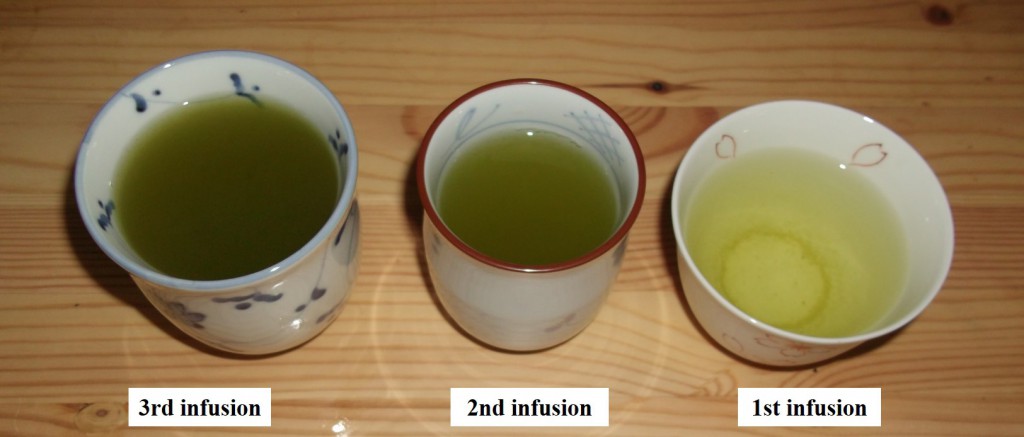Tea has various polyelectrolyte, such as 4 types of catechins in green tea, pectins, polysaccharides, theaflavins and thearubigins in black tea, and so on.
We know these constituents determine tea taste.
In addition, complexes or aggregates of these polyelectrolyte could affect taste and mouthfeel of tea, in my personal opinion.
If laser light is applied to some solution which contain submicron size particles such as polyelectrolyte, the light scatters as depicted in some scientific blogs. We can see a red line of light scattering in the suspension. We obviously find the suspension turbid.
Tea infusion can also scatters laser light as follows, even though its color is clear as we can see through the wood grain of the table.

This means tea infusion contains submicron-size particles, although this tea infusion doesn’t seem to be turbid.
What are these particles?
I guess these could be the complexes or aggregates of tea polyelectrolyte.
Polyelectrolyte can aggregate by some mineral ions such as calcium, ferric ion, etc. and bind such ions making complexes. I think lower infusion rate of tea polyelectrolyte under higher concentration of calcium ion, as clarified by Sipro et al.[140]
I’d like to continue to post such kind of personal speculation.
[140] Spiro M., Price W.E., Miller W.M., Arami M. (1987) : Kinetics and equilibria of tea infusion: Part 8—the effects of salts and of pH on the rate of extraction of theaflavins from black tea leaf, Food Chemistry 25:117-126



